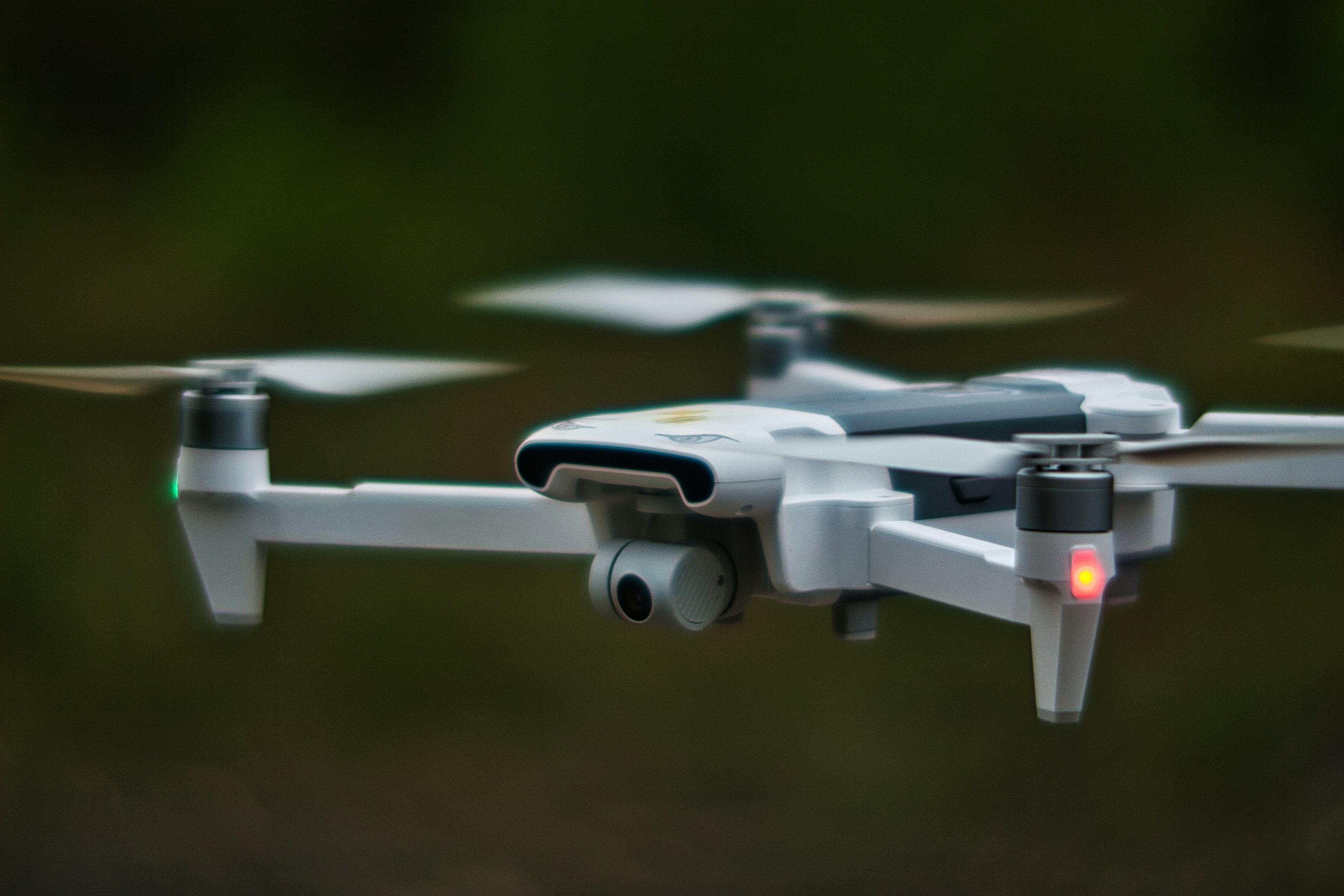
How to Get a Better UAV Job After a Lay-Off or Redundancy
Being made redundant from a role in unmanned aerial vehicles (UAVs) or drone technology can be disheartening—especially in such a cutting-edge and evolving sector. But with the growing adoption of UAVs in defence, surveying, logistics, agriculture, inspection, and emergency response, your skills remain in demand.
Whether you're a drone pilot, UAV systems engineer, geospatial analyst, flight software developer, or mechanical integrator, this guide will help you bounce back stronger after redundancy.
Contents
Understanding Redundancy in the UAV Sector
Step 1: Reset Your Mindset and Career Goals
Step 2: Define Your UAV Experience and Focus Area
Step 3: Update Your CV and Skills Portfolio
Step 4: Optimise LinkedIn, GitHub and Pilot Registrations
Step 5: Reach Out to Recruiters and UAV Employers
Step 6: Apply Strategically and Follow Up
Step 7: Upskill in UAV Certifications, Mapping Tools or Autonomy
Step 8: Explore Contract, Government and Inspection Roles
Step 9: Take Care of Your Finances and Confidence
Bonus: Top UK UAV Employers Hiring in 2025
Final Thoughts: Redundancy as a Flightpath Adjustment
Understanding Redundancy in the UAV Sector
Redundancy in UAVs may result from funding cuts, regulatory changes, or end of contract work (especially in defence or research sectors).
However, the demand continues to rise in:
Beyond Visual Line of Sight (BVLOS) operations
Asset inspection and mapping
UAV autonomy and AI navigation
First response and security applications
Precision agriculture and environmental monitoring
Step 1: Reset Your Mindset and Career Goals
Reflect on what part of UAV work you most enjoy: piloting, systems integration, data analysis, AI development, or compliance?
Consider industries that align with your values and skills
Decide whether to pursue freelance/contract flying, join a growing UAV company, or shift to adjacent fields (e.g. geospatial, defence tech, robotics)
Step 2: Define Your UAV Experience and Focus Area
Clarify:
Are you strongest in manual piloting, mission planning, drone coding, electronics, or photogrammetry?
What platforms have you used (e.g. DJI, Parrot, ArduPilot, Pixhawk)?
Do you have CAA permissions, GVC, or OFQUAL-recognised training?
Are you experienced with post-processing tools (e.g. Pix4D, Agisoft Metashape, DroneDeploy)?
Step 3: Update Your CV and Skills Portfolio
Your CV should include:
A headline (e.g. "GVC-Certified UAV Pilot | Aerial Survey & Mapping | Open to Work")
Measurable impact (e.g. "Completed over 150 BVLOS missions for energy infrastructure inspections")
Tools, flight hours, data types, and regulatory knowledge
Links to demo reels, inspection reports, or GitHub (for developers)
Step 4: Optimise LinkedIn, GitHub and Pilot Registrations
LinkedIn Tips:
Headline: "UAV Systems Engineer | BVLOS | GIS Mapping | Open to Work"
About: Mention your experience, key missions, tools used, and sector focus
Upload media such as portfolio videos, mission dashboards, or certifications
Sample LinkedIn About Section:
UAV Pilot | Inspection & Surveying | GVC | Open to Work
GVC-certified drone operator with 5+ years of experience in surveying, visual inspection, and photogrammetry. Redundant after project closure, now seeking new opportunities in infrastructure inspection, emergency response, or asset mapping.
Platforms: DJI Matrice, Phantom, Pix4D, DroneDeploy | 400+ flight hours
GitHub (for devs):
Share UAV control code, ROS packages, waypoint planners, or flight data visualisers
Step 5: Reach Out to Recruiters and UAV Employers
Recruiter Message Example:
Subject: UAV Pilot | GVC | Surveying & Mapping | Available Now
Hi [Recruiter’s Name],
I’m currently seeking a new UAV role after redundancy. I hold a GVC, have 400+ flight hours, and extensive experience in surveying and asset inspection. CV attached. I’d love to hear about any relevant opportunities.
Kind regards,[Your Name][LinkedIn][CV attachment]
Hiring Manager Follow-Up Example:
Subject: Application – UAV Systems Engineer Role at [Company Name]
Dear [Hiring Manager],
I recently applied for the UAV Systems Engineer role and wanted to express my interest. I bring expertise in hardware integration, ArduPilot, BVLOS planning, and mission data pipelines. I’m available immediately and keen to support your UAV operations.
CV attached. I’d be glad to speak further.
Best regards,[Your Name]
Step 6: Apply Strategically and Follow Up
Prioritise roles aligned with your core certifications and tools
Tailor each application to the UAV platform and mission type
Keep an application tracker and follow up after 7–10 days
Use www.uavjobs.co.uk and forums like Commercial UAV News, DroneBase, or LinkedIn groups
Step 7: Upskill in UAV Certifications, Mapping Tools or Autonomy
Now is a great time to:
Gain/renew GVC or CAA authorisations
Take CPD courses in BVLOS, inspection, GIS or airspace safety
Learn DroneDeploy, QGroundControl, AirMap, or OpenCV for vision processing
Stay updated on EASA and UK CAA rule changes
Document new learning in a digital portfolio or blog.
Step 8: Explore Contract, Government and Inspection Roles
Consider freelance roles with UAV service providers or survey firms
Look into defence, search and rescue, utilities or highway inspection jobs
Apply for contracts via public sector frameworks or NI/Scotland infrastructure projects
Join innovation hubs (e.g. Connected Places Catapult, Drone Major Group)
Step 9: Take Care of Your Finances and Confidence
Apply for redundancy pay, Universal Credit, or self-employment support
Use budgeting tools like MoneyHelper
Set a structured daily routine
Join peer groups or local flying clubs to stay motivated and informed
Bonus: Top UK UAV Employers Hiring in 2025
Altitude Angel
Skyports
sees.ai
QinetiQ
BAE Systems (Autonomous Flight)
Frazer-Nash Consultancy
DronePrep
ARPAS-UK member companies
Network Rail (UAV Division)
Cyberhawk
Plowman Craven
Heliguy
Connected Places Catapult
Blue Bear Systems
UK Ministry of Defence (DSTL UAV projects)
Final Thoughts: Redundancy as a Flightpath Adjustment
Losing your UAV role can be tough, but it’s also a chance to pivot toward better-aligned, higher-impact work. Whether you're flying missions, writing code, or planning data pipelines, the industry still needs your skillset.
You’re not grounded—you’re ready for take-off.
Need Help?
Search jobs by location, platform or mission type
Access CV templates and outreach scripts
Sign up for UAV job alerts at www.uavjobs.co.uk
Follow us on LinkedIn for drone industry trends and updates


